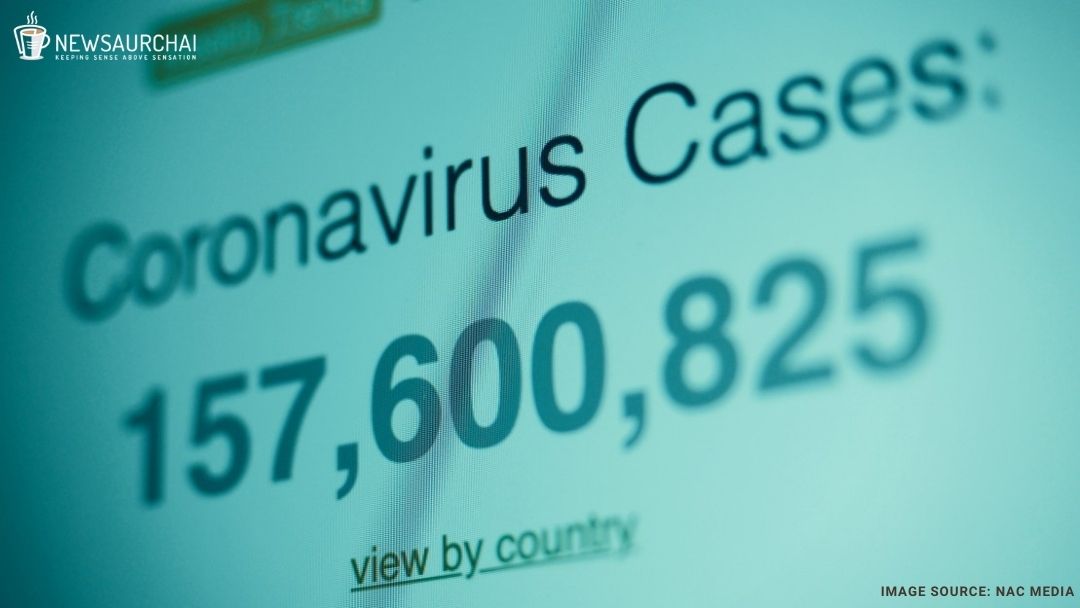
The United States, India, and Brazil have the most confirmed cases, followed by France, Russia, the United Kingdom, and Turkey. There are very few locations that have remained undisturbed.
Since the middle of last year, confirmed cases have been increasing. Although the actual scope of the first outbreaks in 2020 is unknown because testing was not generally available at the time. The 100 million COVID-19 cases were discovered at the end of January, over a year after it was first diagnosed. As of 6:30 p.m. CEST on July 30, 2021, WHO has received reports of 196,553,009 confirmed cases of COVID-19, with 4,200,412 fatalities. A total of 3,839,816,037 vaccination doses has been delivered as of July 28, 2021.
After reaching a record high of over 0.9 million cases on April 28, 2021, new daily instances of the coronavirus continued to decline, reaching a low point on June 21, when over 0.3 million cases were reported. Since then yet, there has been a global increase in cases. On July 15, 0.53 million daily cases were reported, and over three million new cases were reported in the second week of the month. As of July 15, 188.9 million patients have been recorded worldwide. The transmissive Delta form accounting for most infections in 111 countries. Most instances were recorded in Brazil, India, Indonesia, the United Kingdom, and Colombia in the last week. With the steepest increases in Zimbabwe (72%), Indonesia (44%), the United States (38%), Bangladesh (35%), and the United Kingdom (30%). Many Asian nations, including Vietnam, Malaysia, South Korea, and Japan, have reported many daily cases. However, the spread was under control.
The number of new cases in Indonesia has been on the rise, with each day seeing a significant increase over the previous day. Indonesia is now the new Asian epicentre, with 56,757 cases recorded on July 15; India reported 39,000 patients on the same day. COVID-19 fatalities are high, according to WHO. After decreasing for nine weeks, with the highest increases in Africa and Southeast Asia. COVID-19 fatalities worldwide surpassed four million on July 7. The last million deaths occurred in under 90 days, the lowest time interval for every one million deaths ever recorded.
High vaccination coverage has been shown in the United States and much of Europe to lower fatalities and even hospitalizations. For example, United Kingdom rises in incidence. There has been fewer hospitalizations and deaths over 87% of the adult population, as they are vaccinated with one dose and over 67% with two doses. In the United States, the increase in cases is concentrated in states with low vaccination coverage, with unvaccinated people accounting for most deaths. Over 55% of Americans have received one dosage, and 48% are completely immunized. It shifts the focus back to improving vaccination coverage and achieving global vaccine equality to avoid fatalities and the spread of dangerous strains. Some nations debate a booster dosage. Even though many African countries’ healthcare professionals have not been completely vaccinated, booster injections have begun to be given to patients with weakened immune systems in Israel.
In comparison, booster shots have been ruled out in the United States for the time being. With vaccine shortages reported in many Indian states. Even among the vaccinated, rigorous adherence to COVID-appropriate behaviour is the only option to postpone and mitigate the consequences of a third wave.
This spring, India and Latin America have seen a significant drop in new cases in the hardest-hit areas of the world. But the global numbers continue to grow. The Delta variety leads them to well-vaccinated regions such as Western Europe and the United States, low but rising infections. This spring, India and Latin America have seen a significant drop in new cases in the hardest-hit areas of the world. Vaccine doses have been given to over 4 billion individuals globally (52 for every 100 people), yet the discrepancy is striking. More than 80% of the population had at least one shot in some wealthy nations. In contrast, the proportion is as low as 1% in many of the poorest.





